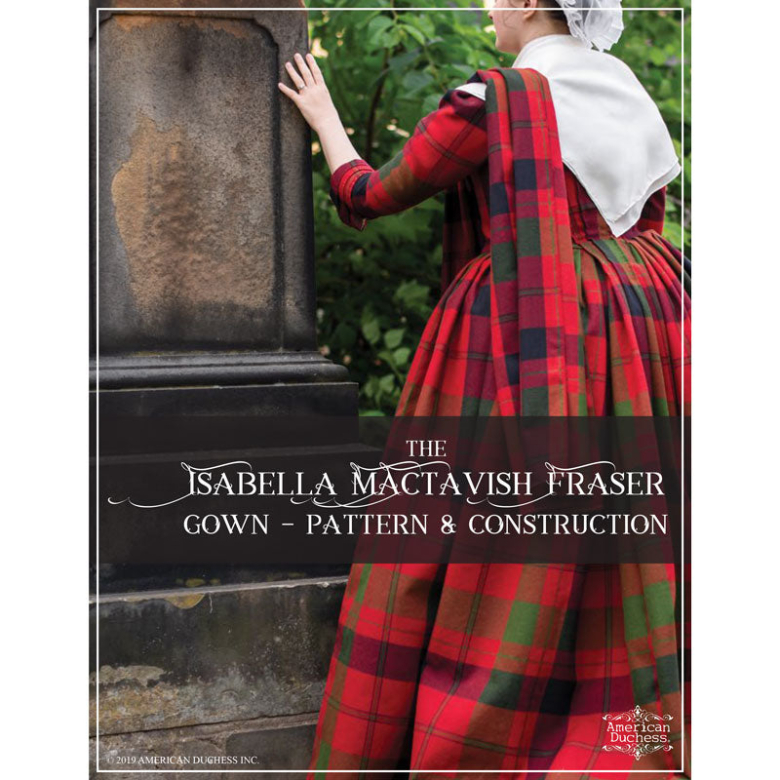From American Duchess:
The Isabella MacTavish Fraser Pattern PDF is a FREE, easily-downloadable, full-color PDF detailing the pattern and construction of the famous 18th-century tartan wedding gown from the Inverness Museum and Art Gallery. In this pattern booklet, you will find the gridded dress pattern, detailed instructions, and many photos of the recreation.
The rare, extant women’s tartan gown known as The Isabella MacTavish Fraser Wedding Dress presents a number of fascinating aspects in fabric choice, construction, and fit. In our exploration and recreation of this gown in May of 2019, we tried to understand the “why” behind these choices rather than simply the “what”.
The gown reportedly dates from 1785 and has been owned by the original family for its entire history. It appears unaltered, a rarity among surviving 18th century gowns, but it also exhibits stylistic choices and construction techniques that speak to earlier times.
The tartan fabric was originally produced from the now-extinct Scottish Dunface sheep, and was known as “hard tartan,” coming directly off the loom in approximately 26 inch (66 cm) widths. It is a very heavy, dense-woven textile that made up into quite a weighty gown. The tartan set, or pattern, assisted greatly in our recreation of the back pleats of the bodice, and revealed a few other clever cutting methods used by the original dressmakers.
There are curious construction features throughout the original dress, and many we’ve called out in the pattern. Most notably is the mistake in the sleeve and the subsequent correction of it, covered with the out-of-fashion pleated cuff. Another atypical method is found in the gown skirts, which were pleated, whipped over the top, then backstitched to the bodice, the raw edges left exposed on the inside.
This pattern is not restricted to wool tartan. It may be made in any material – wool, cotton, linen, or silk. It is important to note that this is not a pattern taken directly off the original Isabella gown. Limited access and a fragile condition made this impossible. Instead, this pattern is draped on a body very close in measurements. To adjust this to your own measurements, make particular note of the waist length and shoulder width, in addition to the bust and waist circumferences.









